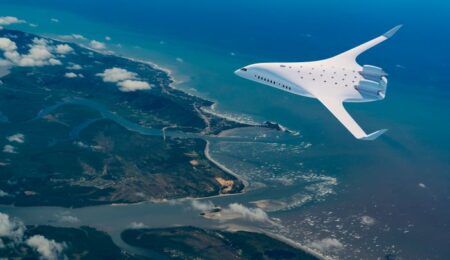The German Aerospace Center (DLR) has examined the interaction between the combustion chamber and turbine for the first time under realistic conditions in a new test rig.
The tests were carried out within the framework of the Full Aerothermal Combustor Turbine interactiOns Research (FACTOR) EU project, which aims to gain significant insight into the design of aircraft turbines. It is believed that design improvements will also contribute to improvements in engine characteristics.
The FACTOR project investigates the complex interaction between the coolant system, the flows and the mixing of the air within aircraft turbines. The goal is to investigate and better understand, in particular, the effect of combustion chamber outflow, which can reach up to 1700°C, on turbine function.
“To achieve this, we apply highly accurate measuring methods that are not suitable for use in a real engine under more tolerable temperatures and pressures in the test rig. This should not only reduce fuel consumption and pollutant emissions, but also improve the service life and optimize the maintenance costs of the turbine components”, said Alexander Krumme from the DRL Institute of Propulsion Technology.
The interface between the combustion chamber and the turbine presents major challenges for engine manufacturers – in addition to the very hot gases, there are also extremely turbulent air flows. Until now, these components have only been investigated separately. However, they can now be investigated together at the new ‘Next-Generation Turbine Facility’ (NG-Turb) at the DLR site in Göttingen, where the tests were carried out.
“The innovation in FACTOR with regard to NG-Turb is the use of a combustor simulator in the inflow of the turbine combined with various pneumatic and optical measurement techniques using laser and infrared light,” explained Krumme.
The NG-Turb test rig is among the most powerful international test facilities for aircraft turbines and is capable of analyzing the turbines of modern aircraft in detail, from business aircraft to the A380. The goal is the development of environment-friendly and cost-effective aircraft engines.
November 2, 2017




